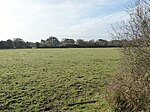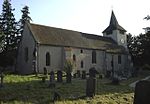Sceptre (fusion reactor)
Sceptre was a series of early fusion power devices based on the Z-pinch concept of plasma confinement, built in the UK starting in 1956. They were the ultimate versions of a series of devices tracing their history to the original pinch machines, built at Imperial College London by Cousins and Ware in 1947. When the UK's fusion work was classified in 1950, Ware's team was moved to the Associated Electrical Industries (AEI) labs at Aldermaston. The team worked on the problems associated with using metal tubes with high voltages, in support of the efforts at Harwell. When Harwell's ZETA machine apparently produced fusion, AEI quickly built a smaller machine, Sceptre, to test their results. Sceptre also produced neutrons, apparently confirming the ZETA experiment. It was later found that the neutrons were spurious, and UK work on Z-pinch ended in the early 1960s.
Excerpt from the Wikipedia article Sceptre (fusion reactor) (License: CC BY-SA 3.0, Authors).Sceptre (fusion reactor)
Reading Road,
Geographical coordinates (GPS) Address Nearby Places Show on map
Geographical coordinates (GPS)
| Latitude | Longitude |
|---|---|
| N 51.36925 ° | E -1.1405277777778 ° |
Address
Reading Road
RG7 4PP
England, United Kingdom
Open on Google Maps








